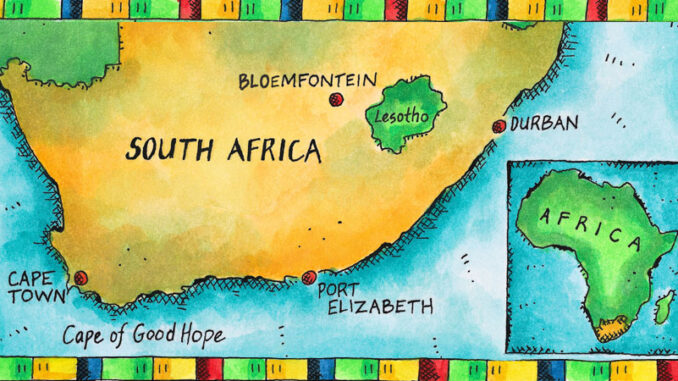
Last week, btw reported on the death of Nelson Mandela. He was a prominent world leader and South Africa’s first black president. But he is perhaps best known for his fight to successfully end apartheid in his country.
So What Is It?

South Africa has a long history of racial tension going back to its colonization by Britain in the late 1700s. But in 1948, Daniel Francois Malan (also known as DF Malan) of the Reunited National Party (or National Party) ran for Prime Minister. He made open campaign promises to enact apartheid, a legal system of forced segregation. The word apartheid literally means “apart.” Even though whites only made up 16 percent of South African population, they were the only people allowed to vote.
The National Party won the election. It officially classified the population of South Africa into one of four groups: Black, White, Coloured (mixed race) and Asian. Laws were immediately passed to enforce segregation of these four groups. One of the first laws passed allowed Whites to live in the cities, while the other groups were forced into rural areas called “African homelands.”
Inside these homelands, the people had to carry a special identity card with them at all times. They were also subject to curfews. Many other new laws followed, including prohibiting interracial marriage and creating separate facilities (schools hospitals, public transportation and beaches). Life under this rule was very oppressive for all of the disadvantaged racial groups, but especially for Blacks, who made up the majority of South Africa’s population.
Opposition and Nelson Mandela
Nelson Mandela, a South African native, was a 30-year-old law student when apartheid began. Mandela had been very interested in politics and became a member of the African National Congress (ANC) party. The members of the ANC became anti-apartheid activists. They adopting methods of civil disobedience (openly breaking a law believed to be “unjust”), boycotts and nonviolent protest. (Similar civil disobedience actions were taken by Martin Luther King Jr. and civil rights protesters in the 1950s and 1960s in the United States.) Mandela and other ANC protestors were arrested more than once. In 1963, Mandeal and others were found guilty of “political offenses” and sentenced to life in prison.
In the following years, international leaders saw Mandela as a symbol of human rights. World leaders put increasing pressure on the South African government to release him. On February 11, 1990, they did. Mandela went on a tour, meeting with supporters in foreign countries. During these visits, Mandela encouraged others to support sanctions (penalties applied from one country toward another, usually trade and economic related). He felt that this economic pressure would speed the end of apartheid in South Africa.
The End of Apartheid
Under the leadership of Mandela, the ANC played a big role in ending the system of apartheid in South Africa. Negotiations between the ANC and the ruling National Party took place between 1990 and 1993. It was called the Convention for a Democratic South Africa (CODESA). The first big milestone in the negotiations was the National Peace Accord (NPA), a crucial document in reducing violence between racial groups in South Africa. It was signed in 1991 by representatives of 27 South African political organizations. The final result of CODESA was Africa’s first-ever multi-racial election.
On April 27, 1994, almost 20 million citizens stood in lines over three days to cast their vote for a new president. There were three candidates: Mangosuthu Buthelezi of the Inkatha Freedom Party, F.W. de Klerk. the incumbent president from the National Party, and Mandela of the AFC. Mandela won the election by securing 63 percent of the votes. Because of his age (75), he served only one five year term , but he was a very popular president among all races.
